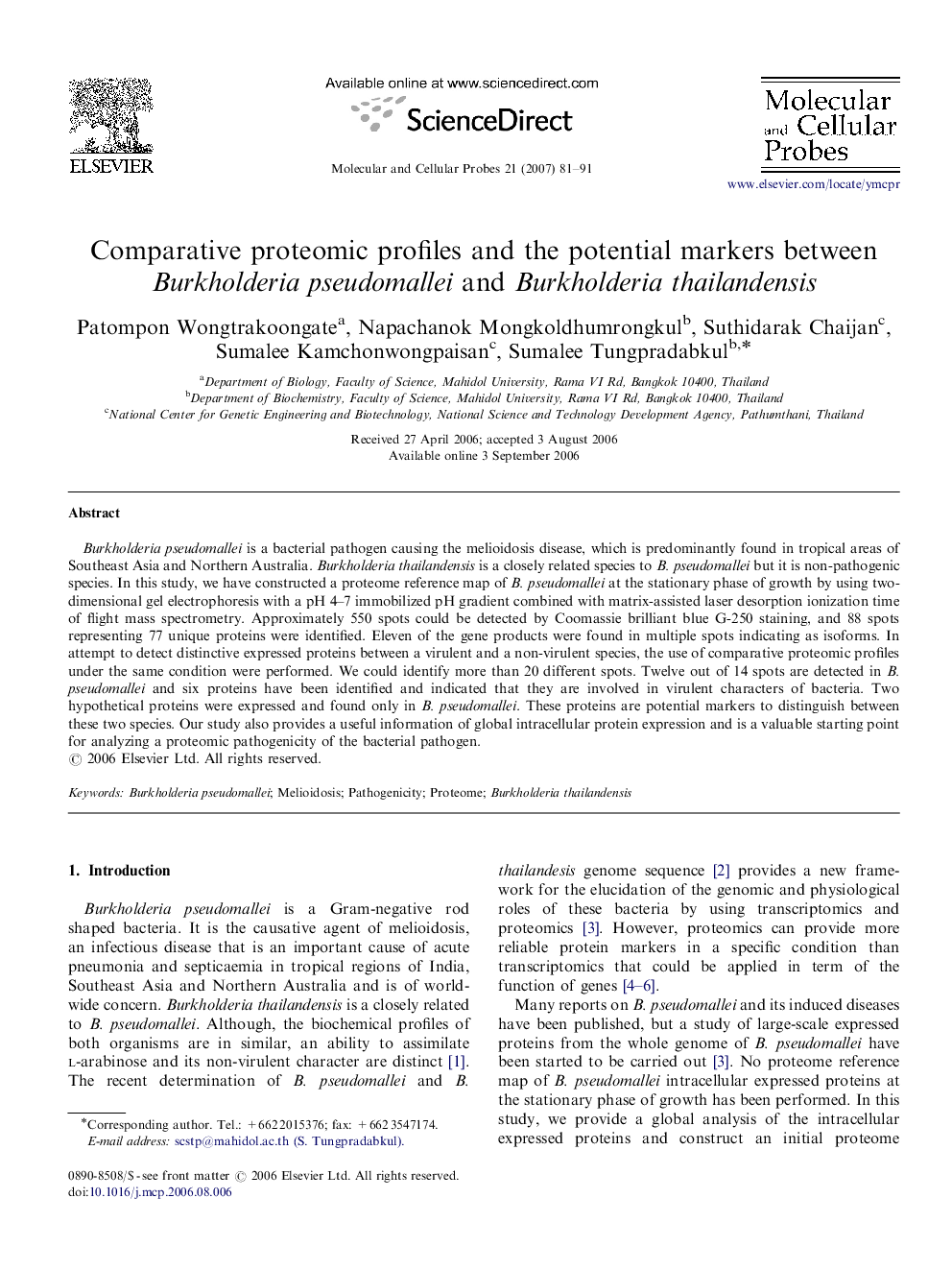| Article ID | Journal | Published Year | Pages | File Type |
|---|---|---|---|---|
| 2200089 | Molecular and Cellular Probes | 2007 | 11 Pages |
Burkholderia pseudomallei is a bacterial pathogen causing the melioidosis disease, which is predominantly found in tropical areas of Southeast Asia and Northern Australia. Burkholderia thailandensis is a closely related species to B. pseudomallei but it is non-pathogenic species. In this study, we have constructed a proteome reference map of B. pseudomallei at the stationary phase of growth by using two-dimensional gel electrophoresis with a pH 4–7 immobilized pH gradient combined with matrix-assisted laser desorption ionization time of flight mass spectrometry. Approximately 550 spots could be detected by Coomassie brilliant blue G-250 staining, and 88 spots representing 77 unique proteins were identified. Eleven of the gene products were found in multiple spots indicating as isoforms. In attempt to detect distinctive expressed proteins between a virulent and a non-virulent species, the use of comparative proteomic profiles under the same condition were performed. We could identify more than 20 different spots. Twelve out of 14 spots are detected in B. pseudomallei and six proteins have been identified and indicated that they are involved in virulent characters of bacteria. Two hypothetical proteins were expressed and found only in B. pseudomallei. These proteins are potential markers to distinguish between these two species. Our study also provides a useful information of global intracellular protein expression and is a valuable starting point for analyzing a proteomic pathogenicity of the bacterial pathogen.
